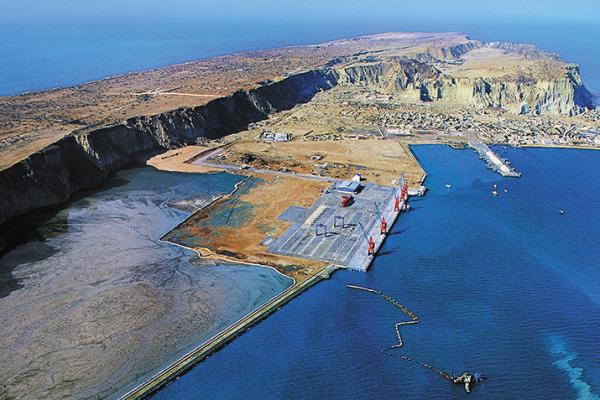Two cities almost vanish from the planet; fishermen leaders stress adoption of preventive measures
Usman Manzoor
KETI BANDER: Such is the effect of climate change on Pakistan that the Arabian Sea has eaten up the country’s two cities along the coastal belt and is eating up almost 100 acres of land on a daily basis. The two tehsils of District Thatta, i.e. Kharo Chan and Keti Bander, have almost been eliminated from the planet in the past three decades and now only a few thousand fishermen reside along the coastal belt of Keti Bander and Kharo Chan, who too have been badly hit by food insecurity.
The sea erosion has not only submerged the two cities but has also destroyed fertile lands measuring approximately 1.5 million acres in Districts Thatta and Badin. The sea has eaten up about 3.5 million acres of land since the 1980s and is eating up about 100 acres on a daily basis, said Muhammad Ali Shah, chairman of the Pakistan Fisherfolk Forum, while explaining the issues regarding sea erosion and the ever-depleting marine life.
Shah, who has been jailed many a times fighting for the cause of the fishermen, is highly respected among the community of the fishermen.
Muhammad Ali Shah, in a meeting at the headquarters of the Pakistan Fisherfolk Forum, explained that Thatta faces sea erosion issues, Badin faces both, sea intrusion and issues arising out of the Left Bank Out-fall Drain (LBOD) which instead of falling into Lake Shakur has been linked with the Tidal canal (the canal which allows seawater to flow upstream during high tides). Shah explained that when the water from LBOD collides with the Tidal canal, the corresponding fertile lands get inundated because of breaches thus resulting in mass destruction. He added that in Karachi, the massive cutting of mangroves is also causing a similar situation, and the marine life has depleted, thus causing issues of food security as well.
Mustafa Gurgaiz, a water expert and the President of Pakistan Fisherfolk Forum, told The News at Keti Bander that the city of Keti Bander has been eaten up by the sea twice before, and on both occasions people shifted to the coastline and inhabited a new Keti Bander, and it is the third time that the city has been submerged in the sea.
He explained that because of less or no downstream water in the Indus River to go into the sea has caused sea erosion on a massive scale. “The minimum requirement is 35 Million Acre Feet (MAF) per annum to go through the Indus River into the sea to avoid any further sea erosion,” said the expert adding: “But more than 3.5 million MAF water goes into the sea during the flood season i.e. in one week, and what happens during the rest of the year is that the Indus remains dry and sea encroaches the coastal line.”
He maintained that 3.5 MAF water should be released on average basis round the year to save the cities of Sindh from being eaten up by the sea. Gurgaiz held that more than 50 percent land of Keti Bander and Kharo Chan has been submerged while the rest destroyed by salinity.
This correspondent has met many farmers and people who have documents of ownership of hundreds of acres of land but on site there is only sea. Many such people, who were rich two decades ago, have been literally in rags now.
About the solution to the ever worsening situation, Mustafa Gurgaiz said that at least 3.5 MAF water should be left in the Indus River to go into the sea so that more sea erosion does not happen. Secondly, the faulty structure of LBOD should also be mended and it should be either linked with Shakur Lake or somewhere else but not with the Tidal canal. He explained that Shakur Lake is co-owned by India and Pakistan as India owns about 90 percent of it and Pakistan owns the rest 10 percent and because of Indian diplomacy, the lake was declared an environmentally protected place which made the basis of change in design of the LBOD. He held that if the drain has to go through the Tidal canal then the water discharged in it should be treated first instead of releasing toxic and agriculture waste in the LBOD which harms the marine life and also destroys fertile lands when it inundates agriculture lands after colliding with tidal water from the sea.
Abdul Qadir Chandio, a representative of the Sindh government’s Social Welfare Department who also deals with the organizations dealing with the issues of climate change, while explaining the issues said that the faulty design of the LBOD has caused a major problem, and efforts are on to overcome this problem.
http://www.thenews.com.pk/Todays-News-13-39899-Arabian-Sea-eating-up-100-acres-of-Sindh-land-daily

